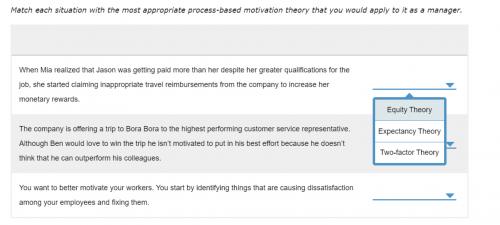 1
1 Answer:
Answer explained below.
Step-by-step explanation:
District 1:
* Oxon Hill (20736)
* Mitchellville (20722)
* Seat Pleasant (20702)

As you can see, the district is drawn in a very irregular shape. This is a common feature of gerrymandered districts. The irregular shape makes it difficult to follow the natural boundaries of neighborhoods or communities.
In the case of District 1, the gerrymandering is clearly designed to give Democrats an advantage. However, it is also possible that the district was drawn in this way to create a more compact and efficient district.
Title: Empowering and Uplifting Our Diverse District
1. Problems Currently Existing in the District:
Our district, comprising three different neighborhoods/zip codes, faces significant challenges that hinder its growth and development. One pressing issue is the glaring economic disparity among the neighborhoods. While one neighborhood flourishes with thriving businesses and low unemployment rates, the other two neighborhoods grapple with limited economic opportunities, resulting in high levels of unemployment and poverty. This economic divide has given rise to unequal access to quality education, healthcare, and essential services, exacerbating overall inequality within the district. Moreover, inadequate infrastructure, including outdated transportation systems and a lack of community resources, further impedes progress and connectivity within the district.
2. Circumstances That Created Those Problems:
The problems within our district stem from a combination of historical neglect, systemic inequalities, and a lack of comprehensive urban planning. Decades of discriminatory practices, redlining, and unequal distribution of resources have perpetuated the socioeconomic disparities we currently witness. Unfair allocation of funds and limited investment in marginalized neighborhoods have exacerbated the wealth gap, creating a cycle of poverty and limited opportunities. Furthermore, the absence of adequate representation and advocacy for marginalized communities has impeded their access to crucial resources, perpetuating the existing problems.
3. Proposed Governmental Policies and Legislation:
To empower and uplift our district, I propose a comprehensive set of policies and legislation aimed at addressing the root causes of these issues:
a. Economic Development Initiatives: Implement targeted economic development programs, such as tax incentives for businesses to invest in underprivileged neighborhoods, job training programs, and support initiatives for small businesses. Encourage entrepreneurship and attract new industries to stimulate economic growth and create employment opportunities in all neighborhoods.
b. Education Reform: Allocate additional funding to schools in underserved neighborhoods, ensuring access to quality education, modern facilities, and specialized programs. Implement mentorship programs, after-school activities, and scholarships to support students' academic and personal growth and bridge the educational divide.
c. Infrastructure Improvement: Secure funding for infrastructure projects, including transportation upgrades, community centers, and recreational facilities. Enhance connectivity within the district, improving access to education, healthcare, and job opportunities for residents in all neighborhoods.
d. Community Engagement and Representation: Establish community task forces and regular town hall meetings to actively engage residents in decision-making processes. Ensure that the voices of all neighborhoods are heard and incorporated into policy decisions. Encourage community-led initiatives and provide support to grassroots organizations working towards positive change.

C. Fair Credit Reporting Act
Explanation:
Fair Credit Reporting Act was brought into action to lay governance on the credit bureaus regarding their consumers' credit information. The act presents the rules and regulations to be followed to obtain and present the credit details of the consumers. Also, it looks over the manner in which the details are shared with the consumers and others for various other purposes.
According to the given excerpt, the Fair Credit Reporting Act allows Carlos to take an action in case of any error found in his credit report.
 1
1  1
1  1
1 
To determine the possibility of expansion in the Rooney’s menu, the most important factor is feedback from the existing customers. Being a marketing consultant both internal and external factors must be considered. Internal factors - company's internal available resources such as fund, employees etc. Capabilities and strategies.
External aspect is environmental context competitor's customer wants, needs and potentials.
Options:
a. The small land-owner had an advantage in the negotiations by possessing something that the mine needed.
b. It allowed for equality in the negotiations between interested parties.
c. The impoverished context allowed the government to gain access to the land.
d. No real impact?
Answer:
c. The impoverished context allowed the government to gain access to the land.
Explanation:
The explorations that led to the discovery of Tintaya mine go back to 1917. In 1971, the Peruvian government promoted the exploitation of the mine. In 1980, the expropriation of approximately 4,000 hectares of land, owned by the communities, was carried out. It is for this reason that started a dispute between the commoners and the Company. In 1985 the exploitation of Tintaya began and it became the third producer of the country. In 1994, the mine was bought by Broken Hill Proprietary (BHP), who subsequently merged with the company Billiton, forming the second biggest group in the world production of minerals. In 2001, the first proposal for the framework agreement was made public. An agreement was reached and the framework agreement was consolidated in 2003. The signature of the framework agreement was an innovative milestone. Never before, a mining company had agreed to transfer a percentage of profits to communities and to engage to dialogue with them at all times. In 2005, a violent takeover occurred of the Tintaya facilities. A reformulation of the framework agreement was demanded. The implementation of the framework agreement was taking place very slowly. The president of BHP Billiton had to suspend the mining activity until a new agreement was reached. Then the negotiations began again. Xstrata Cooper (now Glencore) bought Tintaya from BHP Billiton in 2006. The owner changed, but the same conflicts and mobilizations continued until 2012. The last stoppage lasted eight days. During this paralysis, violent acts occurred and even the mine was asked to close, which was completely rejected by the government. At present, no resolution or reformulation of the framework agreement has been reached.
So is often the case, the expansion of mining activity led to the expropriation or purchase of land, back in 1980, from five communities and left open conflicts (low prices, evictions, illegitimate negotiations, etc.), as well as various environmental and human rights problems.

It will provide an instant answer!
